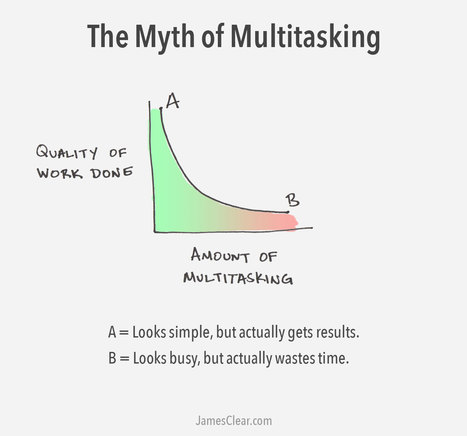"Yes, we are capable of doing two things at the same time. It is possible, for example, to watch TV while cooking dinner or to answer an email while talking on the phone", writes James Clear
"What is impossible, however, is concentrating on two tasks at once. Multitasking forces your brain to switch back and forth very quickly from one task to another.
This wouldn't be a big deal if the human brain could transition seamlessly from one job to the next, but it can't. Multitasking forces you to pay a mental price each time you interrupt one task and jump to another. In psychology terms, this mental price is called the switching cost."
Via Matthew Farmer



 Your new post is loading...
Your new post is loading...













With so much information all around us, the temptation to try to multi-task is very high but as this article and many others tell us is that we can't really multi-task. We can process things in serial or switch attention between two things happening at once but if the the cognitive attention required for either task is significant for either task we cannot effectively do them at the same time.
The pressure to try to multitask is high given the information overload but the reality is that we need to ensure that we don't experience a 'filter failure' and are able to prioritise and focus.